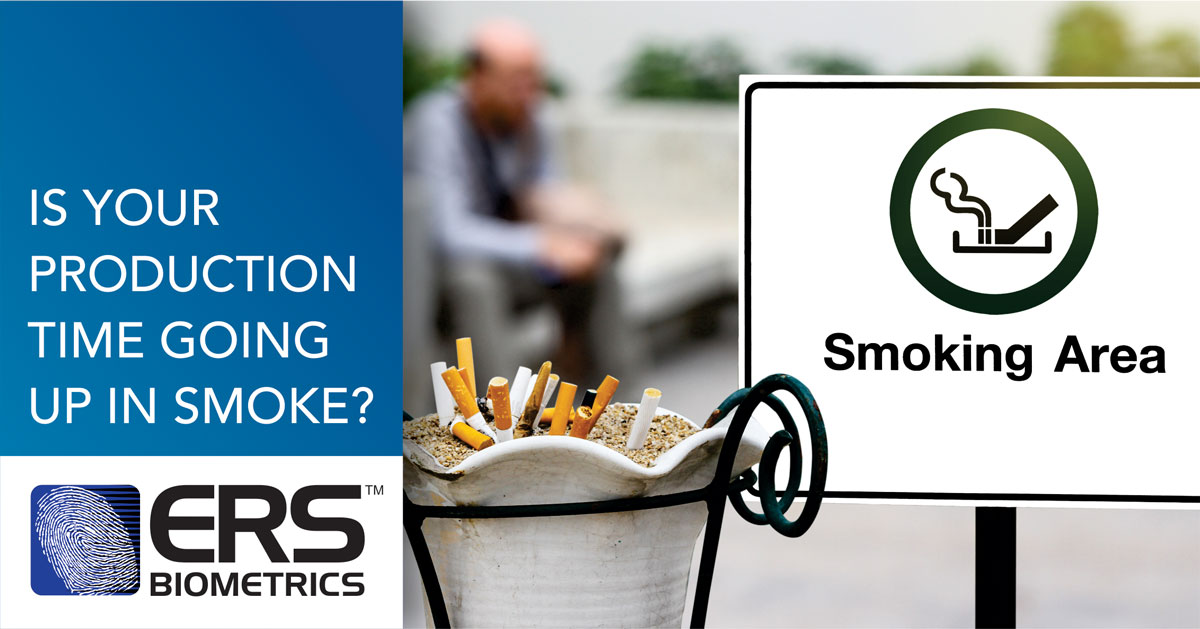Smoking & the Loss of Productivity in the Workplace
How do you accurately track the amount of time your employees spend smoking each day?
Smoking laws have changed drastically over the last few years, forcing smokers to venture outside and in some cases quite a bit of distance from a communal area for their daily nicotine fix. This may cause smoke break times to increase more often than not, and a new Bill aims to ban the use of e-cigarettes from public places as well. Smoke breaks have been the topic of heated debates for years, so let’s take a look at how smoke breaks may influence productivity in the workplace. Some would argue that having a cigarette calms them, however, we will be delving into time-related issues.
Let’s look at a high-rise as an example of how the new smoking laws are impacting smokers and in turn impacting your productivity and hours worked: An employee on the 20th floor of the building needs to take the elevator to the ground floor, move to a designated smoking area, have a cigarette, and then go all the way back to their office. Instead of taking a short break, said employee may take a 20 minute break. Take enough 20 minute breaks, and it adds up to a large portion of your daily working hours.
Another factor to consider is equality. No matter the amount of smoke breaks an employee takes, he/she is usually granted the same break time as a non-smoking employee. Some see this as an unfair advantage. If a smoker takes 5 additional breaks a day, why then can a non-smoker not take the same breaks? If a non-smoker sits around for 20 minutes and does no productive work, they are seen as lazy, where a smoker is ‘just having a cigarette’.
To address this matter, some companies have implemented mini-breaks, granting employees an additional 30 minutes break time a day, to take a breather and get themselves back on track. Companies should, however, be very cautious about implementing any additional break policies. Should you grant your smoking employees additional break times? If you do, should non-smokers not receive the exact same breaks? And, for that matter, how will you monitor the breaks, and ensure that your employees stick to them?
A rising trend in Tokyo sees companies give non-smoking employees an additional 6 days leave per annum. This is not a policy that could easily be implemented in South Africa, but it does point toward a global issue.
Some interesting facts on how smoking impacts your productivity:
- On average, smokers miss 6.16 days of work per year due to sickness, compared to non-smokers, who miss 3.86 days per year.
- Workers who smoke a pack a day or more have a 75% higher loss in production time than do non-smoking or ex-smoker employees.
- Employees who take four 10-minute smoke breaks a day actually work one month less per year than workers who don’t take smoke breaks.
- The Centers for Disease Control and Prevention calculates that, in the United States, each employee who smokes costs employers $1,897 (about R16 000) in lost productivity per year.
Keeping track of an employee and his/her movement will help determine which employees abuse their smoke breaks. Keycard access or biometric access on smoke area doors is just one way to accurately track employees. You do, of course, run the risk of one employee simply holding the door for his friends. However, through camera surveillance, the guilty party can quickly be identified. No employer enjoys playing policeman, but sometimes you have to take the necessary steps to root out problem employees.
Take a look at some of our access control hardware here, and our time and attendance software here, for keeping track of your employees and their hours worked.




